From Cape Fear to Casino: Martin Scorsese’s 20 best films, ranked
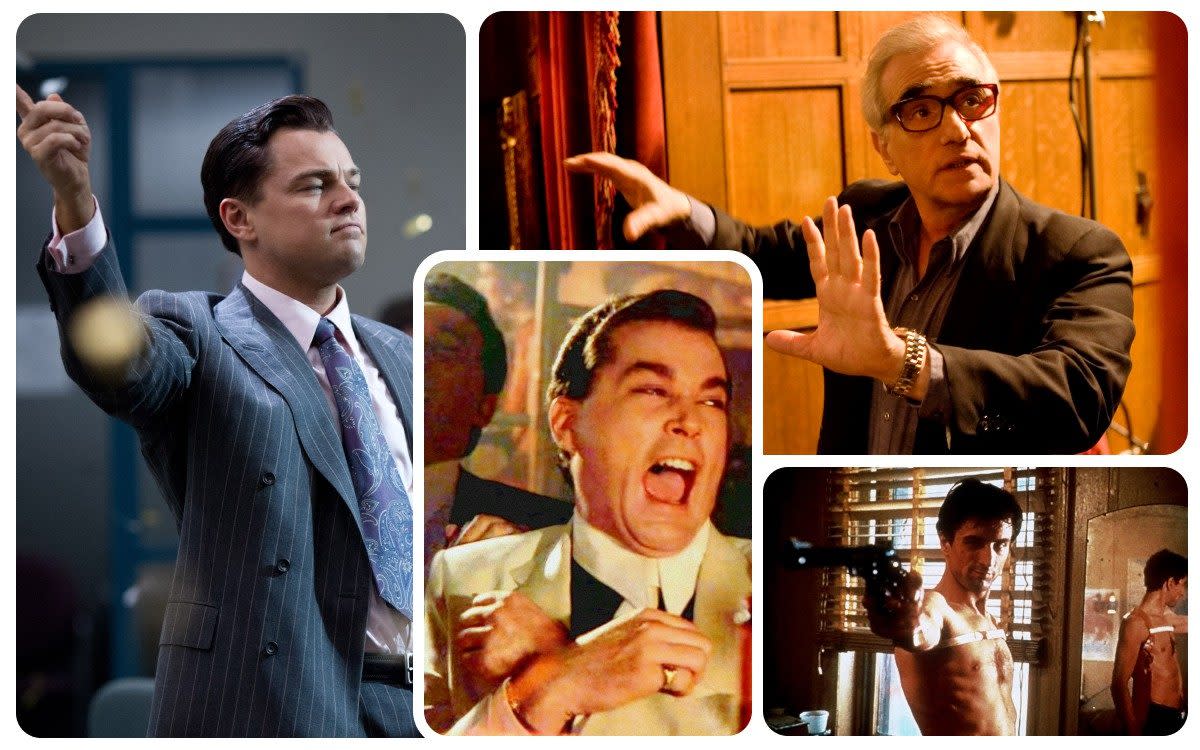
There aren’t many filmographies in the past half-century of cinema where you can easily pick a top 20 without any need to scrape the barrel – even if ordering it is a great deal harder. Such is the consistency of Martin Scorsese, not necessarily at making top-tier masterpieces every time, but never failing to make even his mid films interesting. His latest, the Oklahoma crime epic Killers of the Flower Moon, is included below at what will hopefully be an excitingly high position: it might even ride higher when it’s had longer to settle into the pantheon.
There’s quite a lot that doesn’t make this rundown. We haven’t included any of Scorsese’s 17 feature documentaries, which deserve a similar list of their own, or his (standout) segment of the anthology film New York Stories (1989). His first two, pre-Mean Streets pictures, Who’s That Knocking at My Door (1967) and Boxcar Bertha (1972) aren’t quite in this overall league.
Later, four unlucky outcasts, for purely subjective reasons of taste, can be clustered as also-rans. Cue noises of trumped-up shock: they are The Last Temptation of Christ (1988), Kundun (1997), Shutter Island (2010), and Hugo (2011). These have all sorts of merits, including an anguished title performance by Willem Dafoe here, a sensational Philip Glass score there, and so forth. But there are stronger cases, I think, to be made for the following score of films.
20. New York, New York (1977)
One of Scorsese’s costliest flops, this expensive homage to classic MGM musicals was such an all-round dud it sank him into a spiral of drugs and depression. Indeed, the film virtually pre-enacts that downward plunge, which is what makes it an interestingly personal failure – a rather brave attempt to look at the bitter truths of modern romance (between De Niro’s jazz saxophonist and Liza Minnelli’s small-time singer) within the consciously artificial frame of the musical form. Plus, you do get Minnelli belting out the title song like nobody’s business. It’s a tough, adult, abrasive piece of work.
19. The Color of Money (1986)
A quarter-century after Robert Rossen’s The Hustler (1961), Marty grabbed the opportunity to stage a commercial comeback with this jazzy sequel, in the process dishing a fabulous Paul Newman his Best Actor Oscar (as Walter Tevis’s pool shark, “Fast Eddie” Felson) on a silver platter. While it lacks the seediness and fatigue that made the original so indelible, it’s a supremely polished piece of studio entertainment, deploying Tom Cruise’s hotshot smarm and the fire of Mary Elizabeth Mastrantonio with equal aplomb. What Michael Ballhaus does around the pool table with his lighting and camera moves is pure trick-shot magic.

18. Silence (2016)
A scouring test of faith (in every sense) which took 30 years to get made, not least because of the unsexy logline: based on a densely theological 1966 novel by Shûsaku Endô, it’s about two Jesuit priests (Andrew Garfield and Adam Driver) who travel to Japan in the 17th century to find their errant mentor (Liam Neeson), rumoured to be an apostate. Garfield is not up to his especially gruelling task – had he swapped roles with Driver, it might have helped – and in fact the Japanese actors (Issey Ogata’s riveting inquisitor, above all) consistently thrive the best. A slog at times, it culminates with a howling, primal power.
17. After Hours (1985)
One terrible night in SoHo awaits when Griffin Dunne’s bored computer clerk tumbles down a series of rabbit holes while simply trying to get home. Inherited from Tim Burton, this scuzzily wild, sexually outré black comedy was a frisky experiment at a time when Scorsese needed his mojo back, and it worked – he won Best Director in Cannes. Some parts of its urban panorama have dated better than others, and it does have the ring of marking time and showing off, like a stage illusionist doing bunny routines on the spot. But it’s a pungent diversion – influential on Edgar Wright, Greta Gerwig, Ari Aster and Uncut Gems directors the Safdie brothers.
16. Gangs of New York (2002)
In the scrummage of a vicious feud between Catholics and Protestants in Lower Manhattan’s 19th century slums, the battle for America was fought: at least per this palpably strained, fitfully fascinating epic, which heaves its $100m bulk around while feeling very much like the work of multiple high-end screenwriters (Jay Cocks, Steven Zaillian, Kenneth Lonergan) over 20-odd years. The final fight was between Scorsese and Harvey Weinstein to make it work: rarely when Leonardo DiCaprio or Cameron Diaz are milling around redundantly, but tantalisingly often when Daniel Day-Lewis’s Bill the Butcher grabs the mic, demanding we roll up for his very own savage circus.
15. The Aviator (2004)
The entire life of Howard Hughes was a lot for Scorsese to chew off here. While not everything in The Aviator flies, it’s remarkable how well it whips by for a 170-minute biopic – a rhythmic marathon, soaring when it needs to, alert to the long haul, and one of Thelma Schoonmaker’s craftiest editing feats. While not Oscar-worthy by any means, a focused DiCaprio certainly improved on his Gangs performance: his obsessive-compulsive Hughes is tragically boyish to the last, mumbling “the way of the future” when he’s long since forfeited his own. The deep-bench supporting cast – Blanchett, Beckinsale, Baldwin, Alda, Holm – lends it a Spielbergian largesse.
14. The Wolf of Wall Street (2013)
A top-three classic for some, this rampant account of a sociopath’s get-rich schemes returned for its subject to the colour of money (a career-long obsession) and made a fortune in its own right. Is it Scorsese for meatheads, though? The rise and fall of Jordan Belfort is so archetypal it can barely be milked as drama, so it’s extended into skit-filled parody, with many scenes wildly outstaying their welcome. It’s blatantly undisciplined. Then again, when the set pieces click – the Quaaludes! – they have a lot to do with DiCaprio’s madcap commitment, and Belfort’s yacht meeting with Kyle Chandler’s Fed is a doozy.
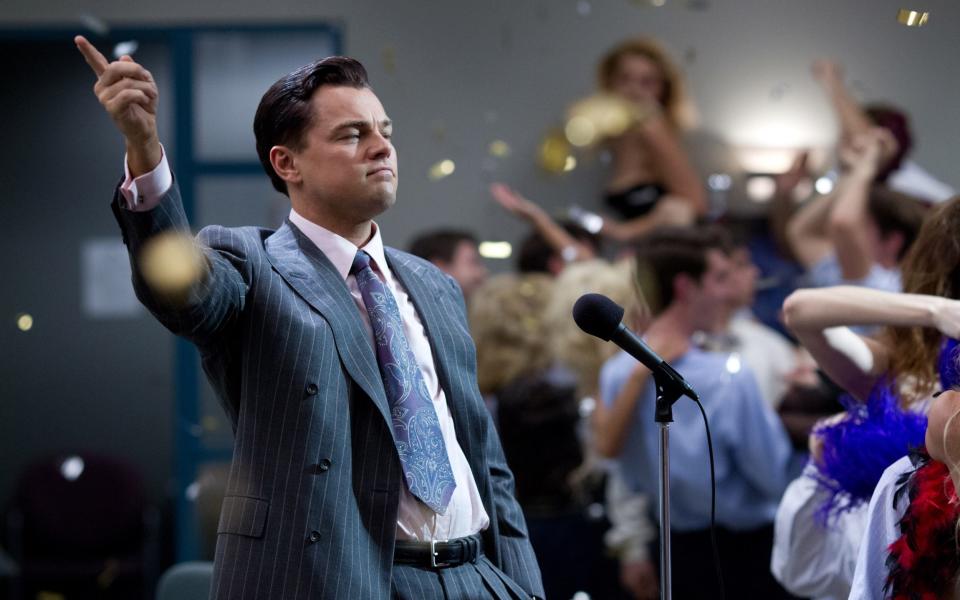
13. Alice Doesn’t Live Here Anymore (1974)
A somewhat neglected early project which scored a well-deserved Best Actress Oscar for Ellen Burstyn, as a widowed mother setting out on the road with her son (wonderfully gawky Alfred Lutter III) from New Mexico to California, where she tries to make it as a lounge singer. Scorsese was director-for-hire in his first film for a studio (Warner Bros), but did a splendid job with the settings and minor characters (especially Lutter, and Diane Ladd’s caustic waitress, nominated for support). It achieves unpatronising grit as a “women’s picture”, even if the trad love story with Kris Kristofferson sells Alice down the river.
12. The Departed (2006)
Scorsese’s first remake since Cape Fear took the Hong Kong crime drama Infernal Affairs and re-installed it in the criminal underworld of Boston, preserving the criss-crossy plot about a cop (DiCaprio) and a hood (Matt Damon) simultaneously infiltrating each other’s clans. Getting plenty of kicks out of its sweary, swaggering William Monahan script, it was a smash hit, finally snagging Scorsese long-elusive glory at the Oscars, in an admittedly weak year. While it’s a long way from perfect – Jack Nicholson’s hammy kingpin is overindulged, upsetting the symmetry – the film’s take on besieged masculinity is nothing if not darkly droll, and DiCaprio was on electric form that he’s never since bettered.
11. Casino (1995)
It was too easy to dismiss Casino on release as Goodfellas redux, which the film’s entire structure, Nicholas Pileggi script, and De Niro/Pesci pairing certainly facilitated. It sometimes loses itself in overlapping voiceovers and extraneous subplots, but the meat of it is rich and juicy. We’re planted in the shifting sands of Las Vegas from 1973-1986, following robo-brained Mafia employee Ace Rothstein (De Niro) as he tends an empire, with the help of Pesci’s on-the-make enforcer. Money rules and ruins everyone on screen. Goodness, too, does Sharon Stone liven up the joint, in a career-best turn as the ex-showgirl Ace makes the dire mistake of marrying.
10. Cape Fear (1991)
Until it goes way overboard at the end, this is exactly the remake of Cape Fear you would order from Scorsese: hot, nervy, virtuosic. It’s an inspired decision to make Nick Nolte’s cringing lawyer so morally craven (versus Gregory Peck’s staunch rectitude in the original). As his nemesis, a former client whom he willingly let rot in jail, De Niro’s cackling Max Cady, a sexual menace, is allowed to tip over into livid caricature, but when he’s keeping it on simmer, he’s an unsettling boogeyman; Jessica Lange knows exactly the neurotic key to keep things in; and Juliette Lewis is just extraordinary as the adolescent daughter Cady toys with. None of it is in good taste, of course, but it has a genuinely risqué pulpy charge.
9. The Age of Innocence (1993)
Edith Wharton’s 1920 novel of love and scandal among Manhattan’s Gilded Age elite inspired Scorsese’s one and only period drama that isn’t about backstreet knifings and antique brawls: it aims to go delicately for the heart. In fact, it ricochets, on that score – the three leads are gorgeously tailored in their parts, but none of them quite constructs the career-topping performance you’d like. The film is a sumptuous feast of trappings – all floral extravagance, astonishing banquets, silk finery – as Scorsese’s artisans recreate Wharton’s social whirl in sensuous detail. The love triangle? A courtly slow dance that should devastate more than it does.
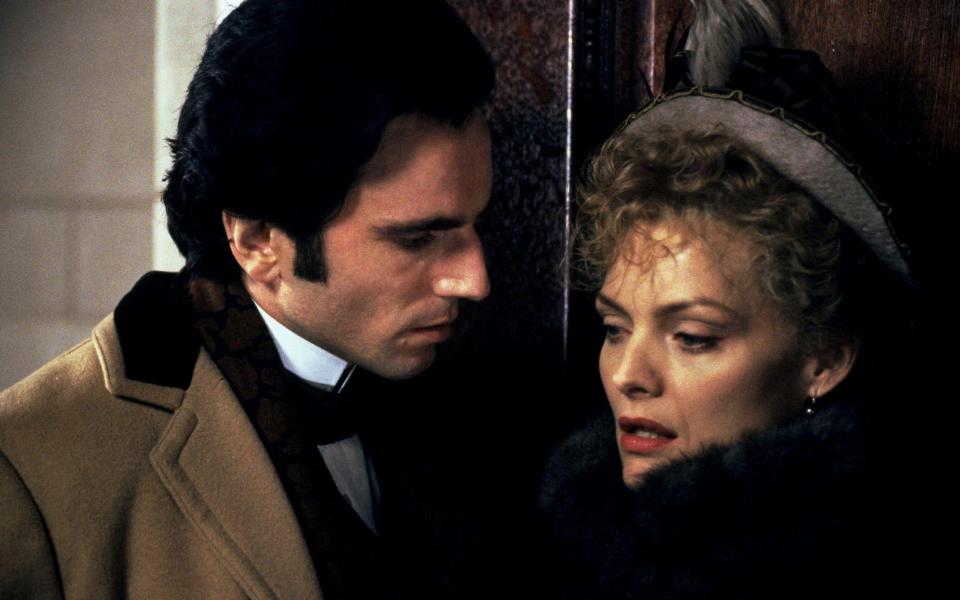
8. Bringing out the Dead (1999)
A candidate for the most underrated film in this whole oeuvre – albeit such a clapped-out vision you can well understand how it slipped through the net. Nicolas Cage brings his world-weariest best as a woebegone paramedic sailing his ambulance nightly into Manhattan’s various circles of hell, with a rotating cast (John Goodman, Tom Sizemore, Ving Rhames) riding shotgun. For Paul Schrader, this completed a loose tetralogy about lost outsiders seeking redemption, begun with Taxi Driver and continued with his own American Gigolo and Light Sleeper. It’s hypnotically moody, with astonishing Robert Richardson photography, and in urgent need of reassessment.
7. Killers of the Flower Moon (2023)
It’s an epic of gaslighting, in the end, about all the many horrors Ernest Buckhart (DiCaprio) is doing under the very nose of his wife Mollie (Lily Gladstone), because she’s an heiress of the Osage nation, and there’s oil beneath their land. Instead of focusing, as he’d originally planned, on the formative days of the FBI, Scorsese put their investigation to one side, to consider the treachery and predation of greedy white men more head-on: this notorious spate of murders in 1920s Oklahoma thereby stands for historic wrongdoings his country still hasn’t come to terms with. The puppetmaster at all times isn’t Ernest, a stooge and a gremlin, but his imperturbable uncle, played by De Niro with enough steely precision to make your blood run cold.
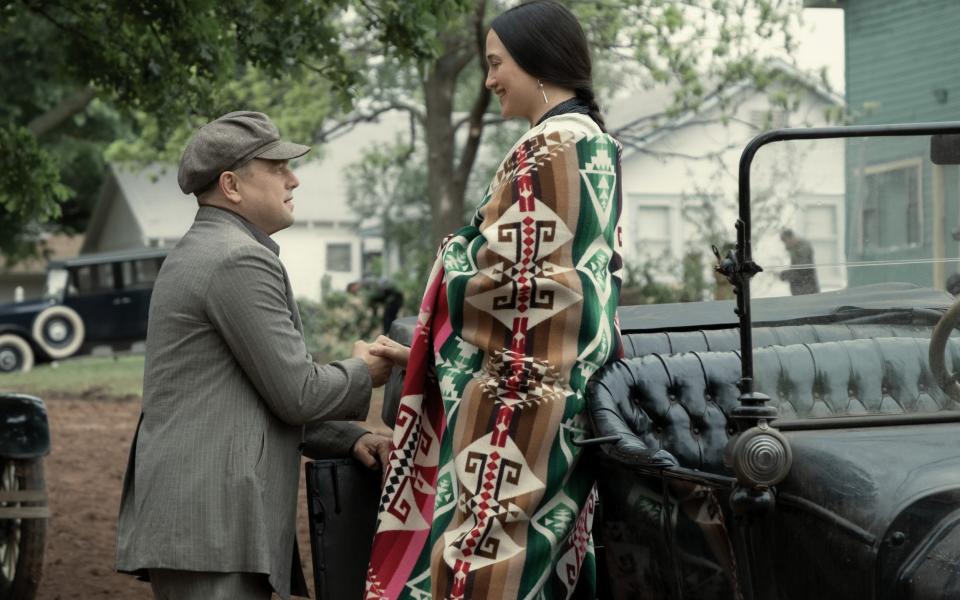
6. Mean Streets (1973)
Scorsese had two quickie features under his belt when he rolled his sleeves up for this, an instantly iconic drama of Little Italy comradeship, with one friend trying to do the right thing (by God and his peers) while another goes off the rails. It launched both Harvey Keitel and De Niro as forces in American cinema, but also flipped open the director’s whole playbook: characters waltzing in with deathless needle-drops, woozy slow-motion that’s never too much, men lying and swearing, grabbing each other’s lapels, and making fools of themselves. These two even share a bed. It has a brazen intimacy, and was quite the statement of intent.
5. The King of Comedy (1983)
A comedy without laughs? Such was the anti-buzz when this opened to ringing silence, the third and most starkly painful in a run of damaging box-office failures. It’s ruthlessly brilliant, though, and way ahead of its time, in anatomising the delusions of De Niro’s Rupert Pupkin, a charmless wannabe entertainer you would cross whole cities to avoid. Rarely has a character craved his 15 minutes of fame more desperately, to the point where he becomes a relentless stalker, and indeed, kidnapper, whose last recourse to impress his idol, the talk-show host Jerry Langford (a perfect Jerry Lewis), is simply to tie him up. It’s full of creepy dead space, and was ironically greeted by exactly what it’s about – the sound of no one clapping.
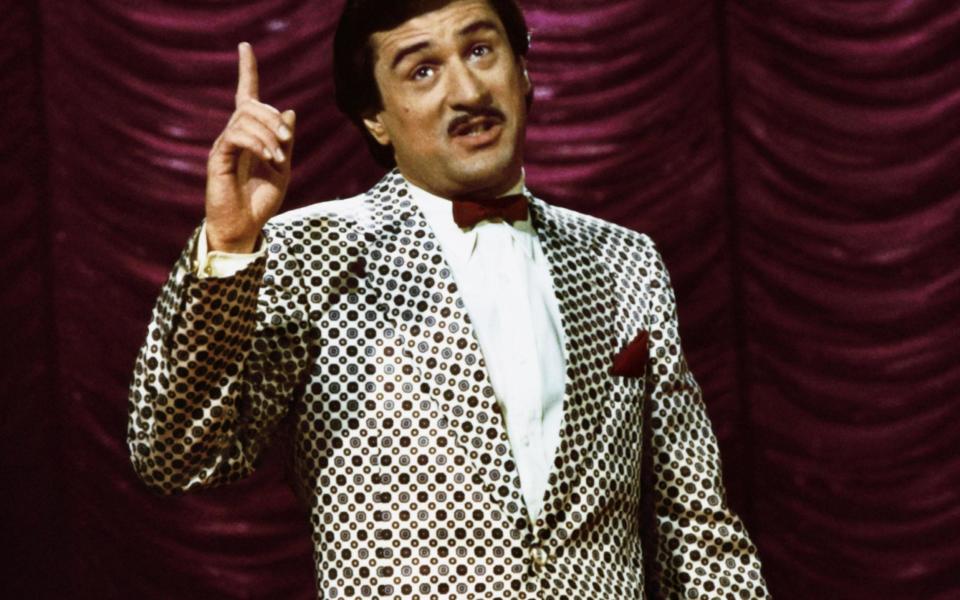
4. The Irishman (2019)
Begone with “too damn long” and piddling gripes about the de-aging technology. This is the monumental Scorsese picture we’d been promised ever since the millennium, and his best in three decades. It had the contours, naturally, of a classic gangster saga, but the difference is all in the longevity of De Niro’s real-life truck driver, hitman, and all-round Mob lackey Frank Sheeran: the sense of waste, the epic sag. It’s a huge ragged sigh of a film which traffics much less in set-pieces than is Scorsese’s wont – the scale is instead symphonic, with movements that surge, dovetail and crest, before a dying fall for the ages. As Sheeran’s one-time boss Jimmy Hoffa, Pacino’s vigour is undimmed, majestic; and Pesci came back here to do arguably the most astonishing work of his life.
3. Taxi Driver (1976)
Travis Bickle is difficult company. We’re pushed close to this specimen, an insomniac cabbie who becomes obsessed with “saving” Jodie Foster’s teenage sex worker, even as we’re repelled. His vaunted heroism is presented as pretty much a death knell for American society – at least, the way it gets celebrated, at face value. This is the film that announced Martin Scorsese wouldn’t “do” heroes – name one (or one uncomplicated one) in all his work? And the brutal irony is that Bickle, a clearly psychopathic figure, becomes the poster boy, the messiah, when apathy otherwise reigns. We’ve sat with him long enough to understand the implications of this. They rang out with dark clarity in the era just after Vietnam, and they’ve hardly ceased to have meaning in the decades since. Joker, to name but one successor, owes literally everything to it.
2. Raging Bull (1980)
You can not care about Jake LaMotta or boxing, much – I don’t – and still bow down to this as an all-timer for clout, dedication, and craft. It’s the work of several artists at an apex of confidence and swagger: De Niro’s unsparing work as this angry Bronx slugger, naturally the lynchpin, is an Oscar-winning milestone for risking such ugliness, inside and out. The fluidity of the style is everything: every boxing film since (to include the likes of Ali, and the excellent Creed) has had no choice but to go up against it, bout by bout. The harsh beauty of Michael Chapman’s rapturous b/w photography, and the verve of Schoonmaker’s edits, make the case for LaMotta’s life as a grimy, rather ordinary, but weirdly essential American tragedy.
1. Goodfellas (1990)
It’s the one. Taking Goodfellas for granted – simply because it’s the most sheer fun of all Scorsese’s major films – won’t do. Perhaps this account of 25 years in the life of a Brooklyn mafioso (the late, great Ray Liotta) isn’t gunning for the immortal profundity of some others.
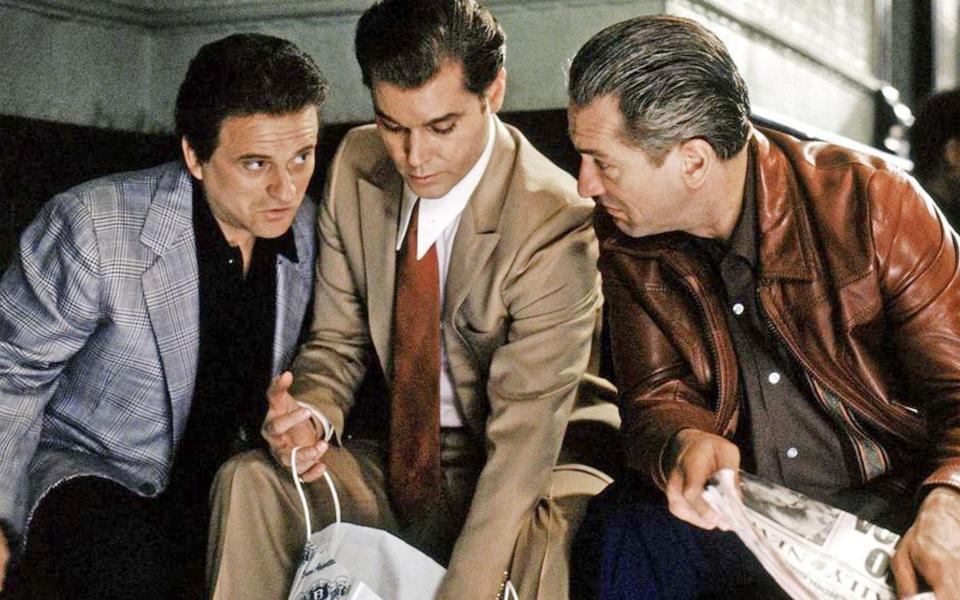
As a result, though, it gives vent to a looseness, an aliveness, that’s electrifying every time you sit down to it. It has us from hello – with that astonishing swoop into Liotta’s face, in the glow of red tail-lights, as he slams the trunk shut on a re-killed corpse and the bombastic horn blasts of Tony Bennett’s Rags to Riches seal the prologue.
So many crackerjack scenes, performances, and moments litter the film – Pesci’s “funny how?” takes the biscuit – that it plays like a Mafia-themed rollercoaster ride, plunging us right inside the belly of the beast. Dubious, unserious, too adrenalised by the high life and the rising body count? Well, it gets away with murder, time and again. That’s rather the point.


